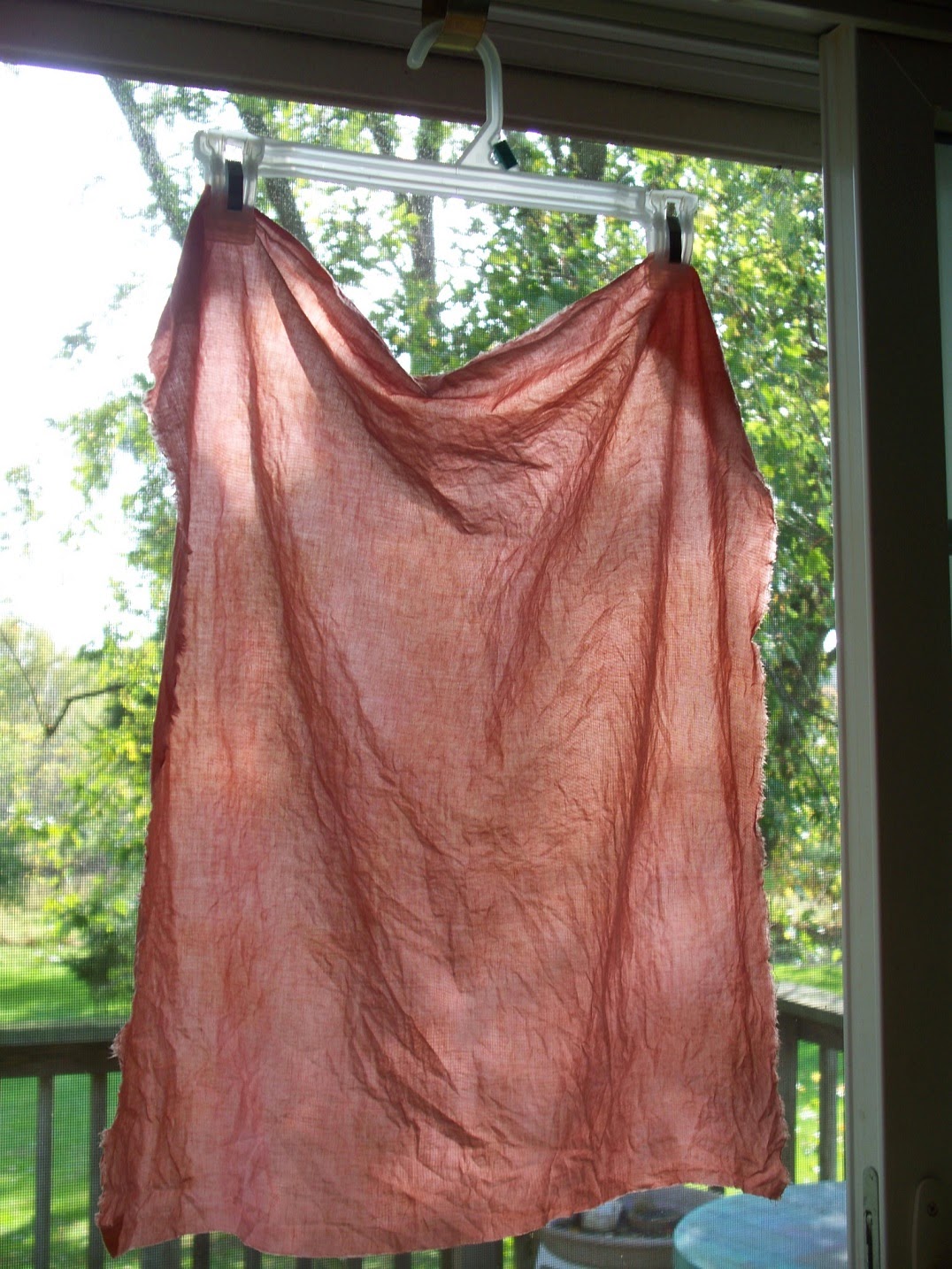at some eco dye blogs; I had found a couple
eco dyeing fabric around a veggie can
using various methods.
So I thought that I would try one.
I had used the skin and the pit of an
avocado in a pot (stainless steel) and
covered with (tap) water. Heated for
about 2 hours and left overnight.
No modifier was added to the dye bath.
The cotton fabric that I used was
treated with alum.
I have to say again that I'm not an
expert; I'm just playing and learning
along the way.
And I forgot to take photos of the can
once it was wrapped.
and placed yellow onions skins around.
I then wrapped Bamboo crochet yarn all
around the can - tightly. (it's all that I had to wrap)
The can was placed into the avocado dye
bath and heated (not boiled) for about
2 hours and left it for a few hours
coming back and turning it.
When I unwrapped it I found it had
a blackish ring in the middle.
The center ring is the only part
that was exposed to the can; the onion
skins covered the rest.
We call them tin cans but when I googled
to see what our veggie cans are made
of I found this:
http://www.keenforgreen.com/recycle/are_vegetable_cans_recyclable
"Veggie cans are made from steel (though
often referred to as "tin cans" because
there is a very thin coating of aluminum on
the inside). "
Don't have the link to this:
" "Tin" cans are actually made out of steel with tin plating. The tin is there to stop the food from reacting with the can itself
(Steel cans with compromised tin platings can rust, leading to iron oxide contaminating the food, which makes it taste awful; this is
why dented/bent cans are usually on discount, due to their shortened shelf-life)."
Now the reason I looked this up was
because of my next experiment with
the can
This is a new veggie can that I had
just opened a couple of days before -
it's not old.
There are no onion skins just one leaf
that I laid on the fabric and folded
over and then wrapped around the can
- wrapped the yarn around all the way
around the can and fabric and tied.
You can see the yarn marks on this one.
You can see the vague print of the leaf.
But look at all of the blackish color
lines and marks - from the can itself.
Interesting... no? I know very little
chemistry so I can't technically explain
it.
Although I don't like the way this piece
came out - I thought it was a failure but
then quickly thought - it's an experiment
and that I learned something from therefore
it's not a failure.
I tried to get a close up and the
black spots also have some deep purple
colors. Lots of little things going on
in there.
I'm thinking that I'm going to try
this method again.
I also have more avocado fabric to show
but I'll do that during the week.
















































